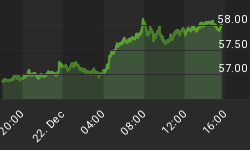Even the tumbling USD has hit a 5-month high against the British pound. Such is the state of the deteriorating GBP as UK CPI hits a 7-year low at 1.1%.
Slowing UK CPI highlights the ensuing threat to QE currencies (USD, GBP) as diminishing inflation urgency enables central banks to further liquify bonds across the yield curve and cap rising yields resulting from higher govt borrowing. While US corporate earnings will comprise the focus of the trading week, slowing inflation will be the macrofocus from the UK , US, Canada and Eurozone.
Rising rates of savings and unemployment in a disinflationary environment will only lead into further cost-cutting at the expense of exacerbating falling payrolls and work hours. These dynamics are especially cogent in the case of sterling, whose central bank finds remains unfazed by currency weakness (unlike the Fed) and is mainly preoccupied by the risk of double dip and the yield impact of 12% of GDP deficit.
As GBP is damaged by an alternating onslaught of BoE pronouncements, sobering forecasts from think tanks and austere spending programs from politicians, the currency remains the choice of the bears during risk aversion as well as during improved risk appetite, selling it against CAD, AUD, NZD and EUR.
GBPUSD hits 5-month lows, testing the key $1.5730 support -- 38% retracement of the move from the 1.3660 low to the 1.7013 high. A close below $1.5730 is to clear the way for $1.5550. Any corrective rebound is seen limited at $1.5920.
EURGBP hits fresh 7-month highs at 0.94, a break of which clears way for 0.9455. This supports our year-end target of 0.97 and expectations for parity in mid Q1 2010.
Canadian dollar's jobs-driven surge is extended by persistent gains in surge extends on the back of the 4 th consecutive daily gain in oil prices, as US crude breaks above $74.00, calling into focus the major resistance of $75.41 -- 200 week moving average.
The unfolding strength of the Canadian dollar has yet to extend against the euro and the Aussie. FX price patterns have shown CAD strength to ensue across the board in weeks following upside surprises in Canada 's job situation. Last week's release of a stellar employment report showed a net rise of 30.6K jobs in September -- the first back-to-back monthly net job creation since Sep-Oct '08. The decline in the unemployment rate to 8.4% from 8.7% was the first decrease since July 2008, an added boost to the currency.
USDCAD extends its losses to 21% year-to-date, hitting a 14-month low of 1.0270. Technically, there is little support before 1.0240 (the highs from Feb-Jul '08). FX markets should expect to hear interventionist remarks from the Bank of Canada, which did include the currency factor as a source of difficulty in its last policy announcement.
EURCAD has fallen below our Friday target of $1.5320, reaching 2 ½ month lows, and is set up for prolonged medium term losses towards 1.5250, followed by 1.5130. Despite the speed of the selling over the last 3 sessions, relative momentum indicators (momentum vs. price) indicate prolonged losses on the weekly horizon. A rebound to no more than 1.5440, before the aforementioned targets are considered.















